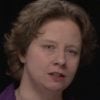- Course Type CLEP
- Subject Science and Mathematics
- Level Introductory
- Length 4 Weeks
- Effort 6 Hours/Week
- Institution Modern States
It reviews the fundamentals of Biology that are usually covered throughout a one-year college course. Our goal as creators of this course is to prepare you to pass the College Board’s CLEP examination and obtain college credit for free.
Through the guidance of Dr. Athena Anderson from Purdue University, this course will review three major areas: molecular and cellular biology, organismal biology, and population biology.
“Biology” is a completely self-paced course. It has no prerequisites and it is offered entirely for free.
CLEP Exam
This course is designed to prepare you for the CLEP Biology exam and cover other related topics as well.
Instructors
-
 Athena Anderson, Ph.D.
Athena Anderson, Ph.D.Purdue University








